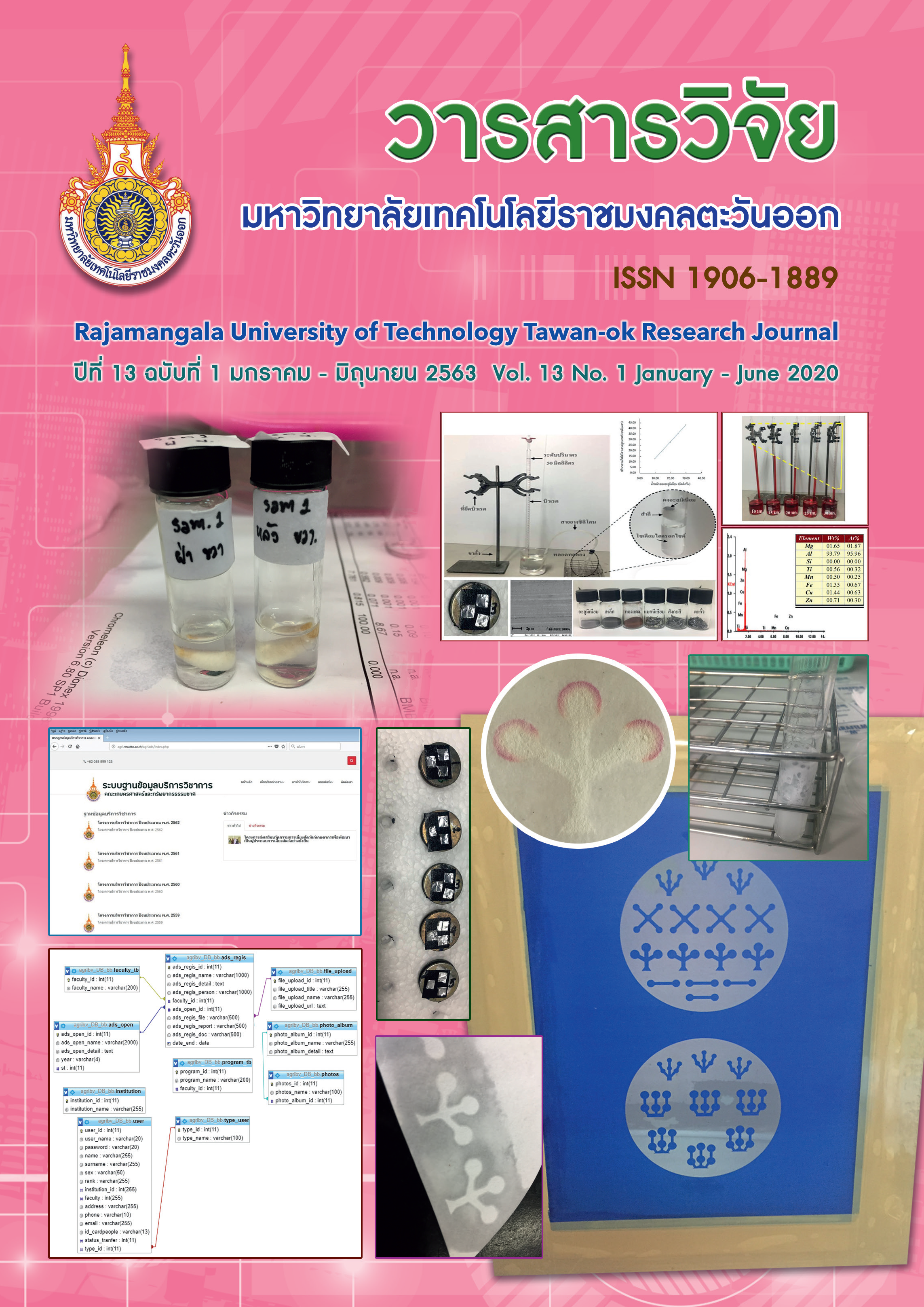The Effect of Salinity Reduction Treatment on Chemical Properties from Green Caviar (Caulerpa lentillifera)
Main Article Content
Abstract
The objective of this research was to study the effects of blanching at 100 degrees Celsius (5, 10 and 15 minutes) and saline solution soaking (1, 2 and 3 days) on chemical composition, sodium content, iodine content, oxidative properties and total phenolic content of green caviar (Caulerpa lentillifera), as well as the
salinity values of water after blanching or immersed by conductivity meter and sensory different test using the Triangle test. The results showed that blanching had no significant effect on the fiber and ash content (p0.05). The longer blanching resulted dramatically decreasing in protein content, sodium, and oxidation properties. The soaking had no significant effect on protein, fat, crude fiber, ash, and moisture content (p0.05). However, the soaking had much lower effect on sodium content of green caviar than blanching. Soaking can decrease sodium content of the green caviar as high as 31.03-48.27%, iodine content lower (2.08- 8.05%), antioxidant capacity lower (0.09-4.87%), total phenolic content lower (1.01-1.68%) than fresh green caviar. However, the conductivity of the water after soaking the green caviar for 3 days (1,890 µS / cm) is close to the conductivity of the tap water, same as the result from sensory tests. From the research indicated that soaking is more suitable to reduce the salinity of green caviar than blanching.
Article Details
References
Association of Official Analytical Chemist (AOAC). 2000. Official Method of Analysis. 15th eds. The Association of official Analysis Chemists, Virginia.
Association of Official Analytical Chemist (AOAC). 2005. Official methods of analysis. 18th eds. The Association of official analytical chemists, Washington DC.
Devi, G. K., K. Manivannan, G. Thirumaran, F. Rajathi, and P. Anantharaman. 2011. In vitro antioxidant activities of selected seaweeds from Southeast coast of India. Asian Pac. J. Trop. Med. 4:205-211.
Hoppu, U., A. Hopia, T. Pohjanheimo, M. Rotola-Pukkila, S. Mäkinen, A. Pihlanto, and M. Sandell. 2017. Effect of Salt Reduction on Consumer Acceptance and Sensory Quality of Food. Foods. 6: 1-12.
ISO 4120. 2004. Sensory analysis – Methodology - Triangle test. International Organization for Standardization, Geneva, Switzerland.
Kazeem, M. I., and T. C. Davies. 2016. Anti-diabetic functional foods as sources of insulin secreting, insulin sensitizing and insulin mimetic agents. J. Funct. Foods. 20: 122-138.
Maisuthisakul P., and L. Changchub. 2014. Effect of Extraction on Phenolic Antioxidant of Different Thai Rice (Oryza Sativa L.) Genotypes. Int. J. Food Prop. 17: 855-865.
Maisuthisakul P., and M. Gordon. 2014. Characterization and storage stability of the extract of Thai mango (Mangifera indica Linn. Cultivar Chok-Anan) seed kernels. J. Food Sci. Technol. 51: 1453-1462.
Mohamed, S., S. N. Hashim, and H. A. Rahman. 2012. Seaweeds: A sustainable functional food for complementary and alternative therapy. Trends Food Sci. Tech. 23: 83-96.
Mukherjee, S., and P. K. Chattopadhyay. 2007. Whirling bed blanching of potato cubes and its effects on product quality. J. Food Eng. 78: 52-60.
Nguyen, V. T., J. Ueng, and G. Tsai. 2011. Proximate Composition, Total Phenolic Content, and Antioxidant Activity of Seagrape (Caulerpa lentillifera). J. Food Sci. 76): C950-C958.
Nofiani, R., S. Hertanto, T. A. Zaharah, and S. Gafur. 2018. Proximate Compositions and Biological Activities of Caulerpa lentillifera. Molekul 13 (2): 141-147.
Ratana-arporn, P., and A. Chirapart. 2006. Nutritional Evaluation of Tropical Green Seaweeds Caulerpa lentillifera and Ulva reticulate. Agric. Nat. Resour. 40 (Suppl.): 75-83.
Sharma, B. R., and D. Y. Rhyu. 2014. Anti-diabetic effects of Caulerpa lentillifera: stimulation of insulin secretion in pancreatic β-cells and enhancement of glucose uptake in adipocytes. Asian Pac. J. Trop. Med. 4: 575-580.
Tanna, B., B. Choudhary, and A. Mishra. 2018. Metabolite profiling, antioxidant, scavenging and anti-proliferative activities of selected tropical green seaweeds reveal the nutraceutical potential of Caulerpa spp. Algal Res. 36: 96-105.


